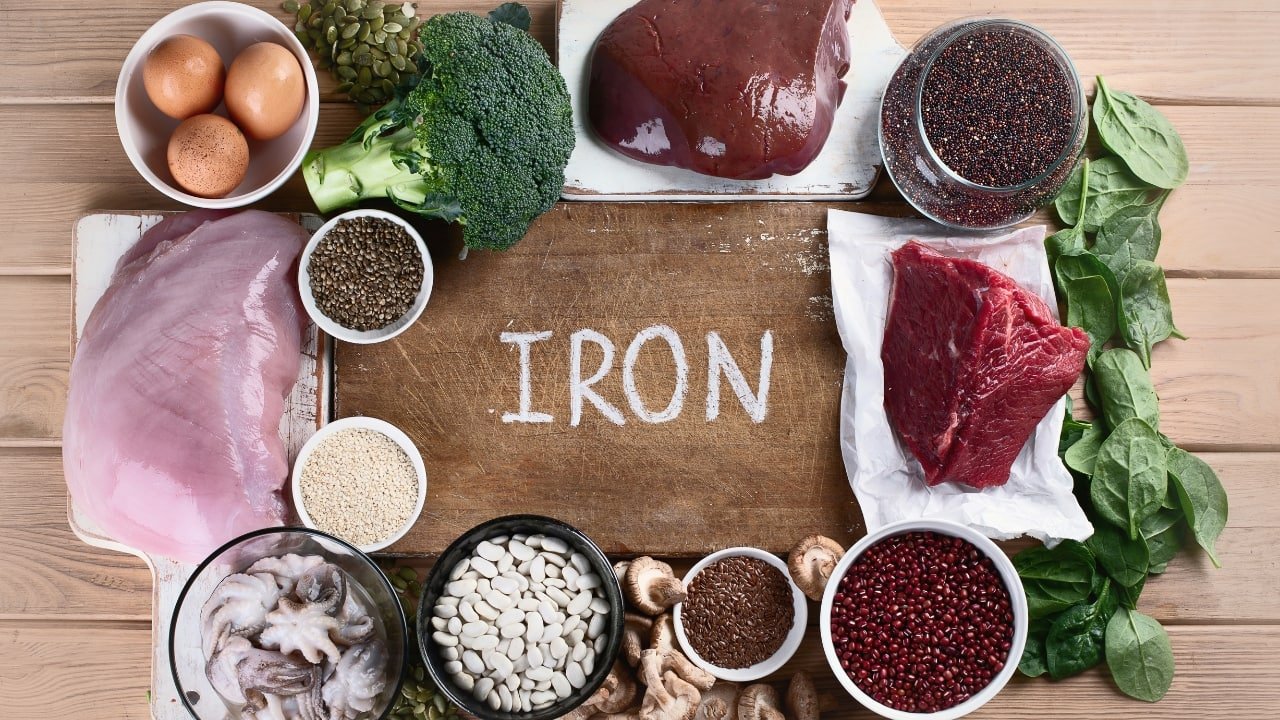If you often feel tired, sluggish and unmotivated, get out of breath when climbing stairs and notice that your hair is thinning, fatigue isn’t the only culprit. These symptoms may be due to iron deficiency. Iron deficiency anemia occurs when your body doesn’t have enough iron. Iron is essential for the production of hemoglobin, a protein in red blood cells that carries oxygen throughout the body. When you don’t have enough iron, your body can’t produce enough healthy red blood cells, leading to anemia. Luckily, certain foods can help replenish iron and fight anemia (Image: Canva)
Iron deficiency occurs when your body doesn’t have enough iron to meet its needs. This deficiency can progress to iron deficiency anemia, which causes symptoms such as a reduced number of red blood cells or hemoglobin. Hemoglobin is essential for transporting oxygen. Without enough hemoglobin, your tissues and organs don’t get enough oxygen, leading to fatigue and weakness. (Image: Canva)
Causes and Symptoms: Iron deficiency can result from several factors, including poor dietary intake, bleeding (from menstruation, gastrointestinal bleeding, or surgery), and increased iron requirements during pregnancy and growth. Symptoms include chronic fatigue, pale skin, shortness of breath, dizziness, brittle nails, and swollen tongue. To combat iron deficiency, it is essential to include iron-rich foods in your diet. There are two types of dietary iron: heme iron (found in animal foods) and non-heme iron (found in plant foods). Heme iron is more easily absorbed by the body, but non-heme iron also contributes significantly to iron intake, especially when combined with foods rich in vitamin C, which enhances absorption. To combat iron deficiency, include these foods in your daily diet (Image: Canva)
Beetroot: Beets are rich in iron, folate and vitamin C, and help treat anemia and iron deficiency by boosting hemoglobin production and increasing iron absorption. They also improve blood flow and reduce inflammation. Grated beets are mixed with whole wheat flour, cumin seeds, coriander powder and salt to make a dough, which is then rolled into paratha shapes and fried on a slightly oiled griddle until golden brown. (Image: Canva)
Story continues below. Advertisement
spinach: Spinach is rich in non-heme iron, which aids in iron absorption, and vitamin C. It’s also high in folate, another nutrient essential for red blood cell production. Easy recipe: Sauteed spinach with garlic and olive oil makes a nutritious side dish (Image: Canva)
lentil: Lentils are rich in non-heme iron, protein, and fiber. They also contain folate and potassium, which support cardiovascular health. For a simple meal, simmer lentils with tomatoes, onions, and spices to make a hearty lentil soup (Image: Canva)
Pumpkin seeds: Pumpkin seeds are a great snack because they’re high in iron, magnesium, and zinc. They also contain healthy fats and antioxidants that help reduce inflammation. Roasted with a little olive oil and sea salt, they make a delicious treat (Image: Canva)
Quinoa: Quinoa is a great plant-based source of iron and protein, and contains all nine essential amino acids. It also contains magnesium, manganese, and phosphorus, which support bone health and energy production. Mix cooked quinoa with vegetables, herbs, and a lemon vinaigrette for a simple quinoa salad (Image: Canva)
Story continues below. Advertisement
Tofu: Tofu is rich in iron, making it a great choice for vegetarians and vegans. It’s also rich in calcium and magnesium, which are important for bone health. Stir-fry tofu with bell peppers, soy sauce, and ginger for a delicious dish. (Image: Canva)
Dark Chocolate: Dark chocolate, high in cocoa, is a delicious way to increase your iron intake. It also contains antioxidants called flavonoids, which improve heart health by lowering blood pressure and improving blood flow. Enjoy dark chocolate as a healthy dessert (Image: Canva)
broccoli: Broccoli is packed with iron and vitamin C, which aids in iron absorption. It’s also high in fiber, which aids digestion, and contains sulforaphane, a compound that may help prevent cancer. Steam some broccoli and toss with a squeeze of lemon juice and a pinch of salt for a nutritious side dish. (Image: Canva)

